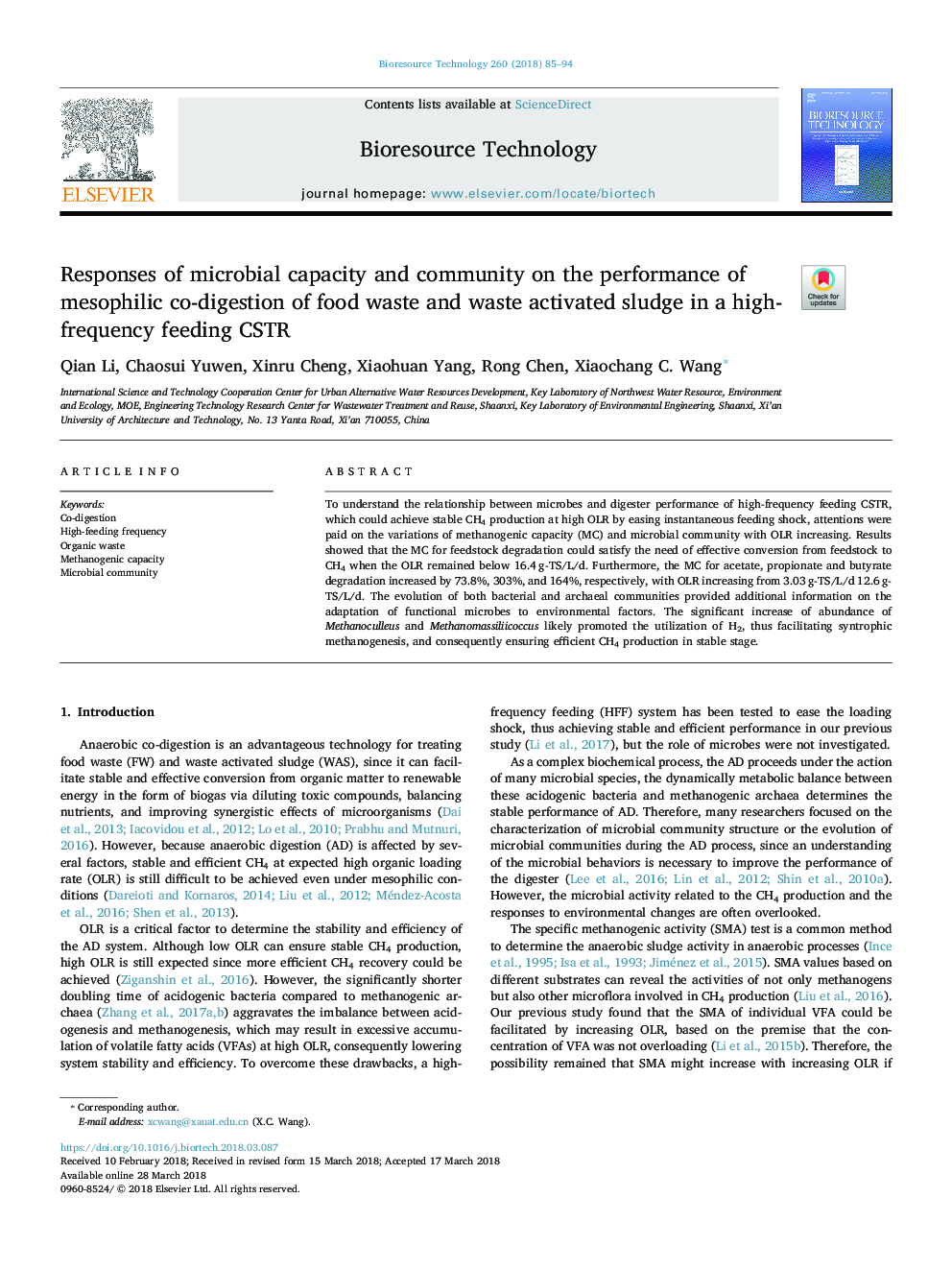| Article ID | Journal | Published Year | Pages | File Type |
|---|---|---|---|---|
| 7067141 | Bioresource Technology | 2018 | 10 Pages |
Abstract
To understand the relationship between microbes and digester performance of high-frequency feeding CSTR, which could achieve stable CH4 production at high OLR by easing instantaneous feeding shock, attentions were paid on the variations of methanogenic capacity (MC) and microbial community with OLR increasing. Results showed that the MC for feedstock degradation could satisfy the need of effective conversion from feedstock to CH4 when the OLR remained below 16.4â¯g-TS/L/d. Furthermore, the MC for acetate, propionate and butyrate degradation increased by 73.8%, 303%, and 164%, respectively, with OLR increasing from 3.03â¯g-TS/L/d 12.6â¯g-TS/L/d. The evolution of both bacterial and archaeal communities provided additional information on the adaptation of functional microbes to environmental factors. The significant increase of abundance of Methanoculleus and Methanomassiliicoccus likely promoted the utilization of H2, thus facilitating syntrophic methanogenesis, and consequently ensuring efficient CH4 production in stable stage.
Related Topics
Physical Sciences and Engineering
Chemical Engineering
Process Chemistry and Technology
Authors
Qian Li, Chaosui Yuwen, Xinru Cheng, Xiaohuan Yang, Rong Chen, Xiaochang C. Wang,
